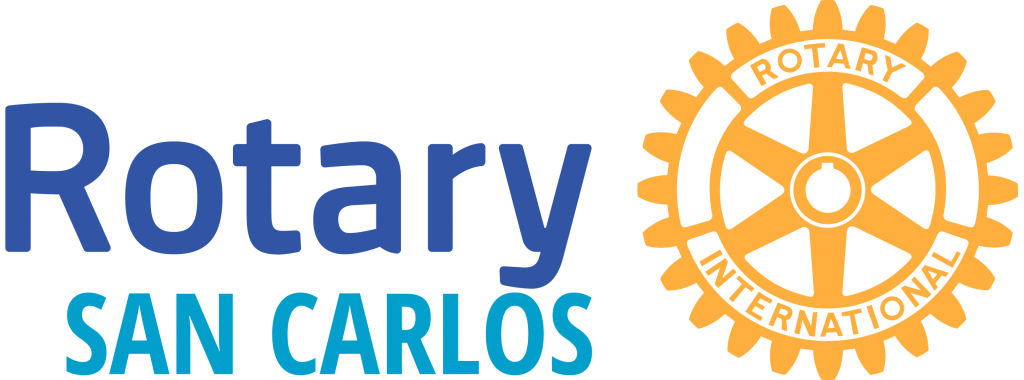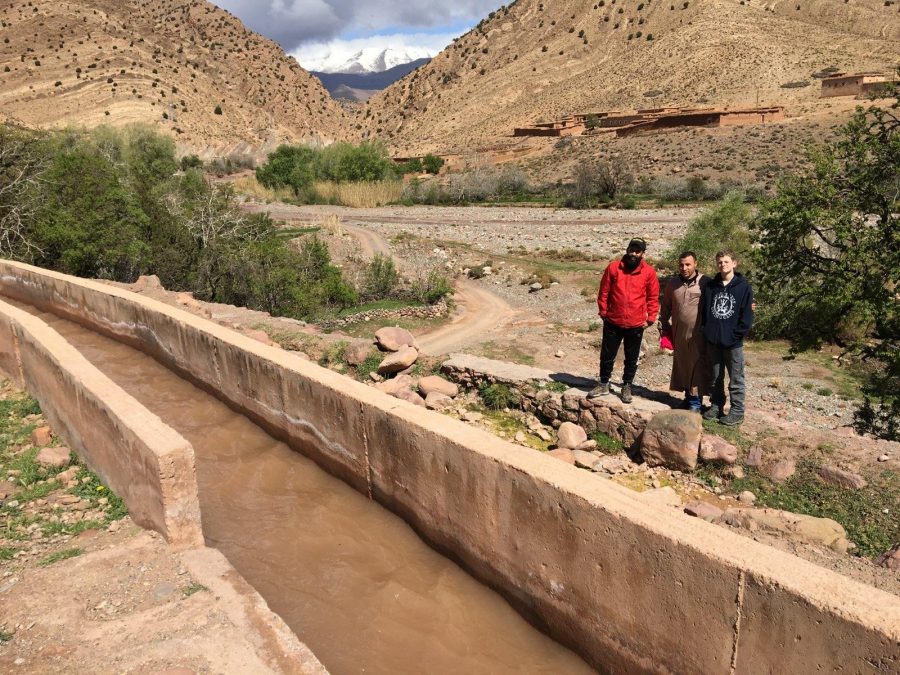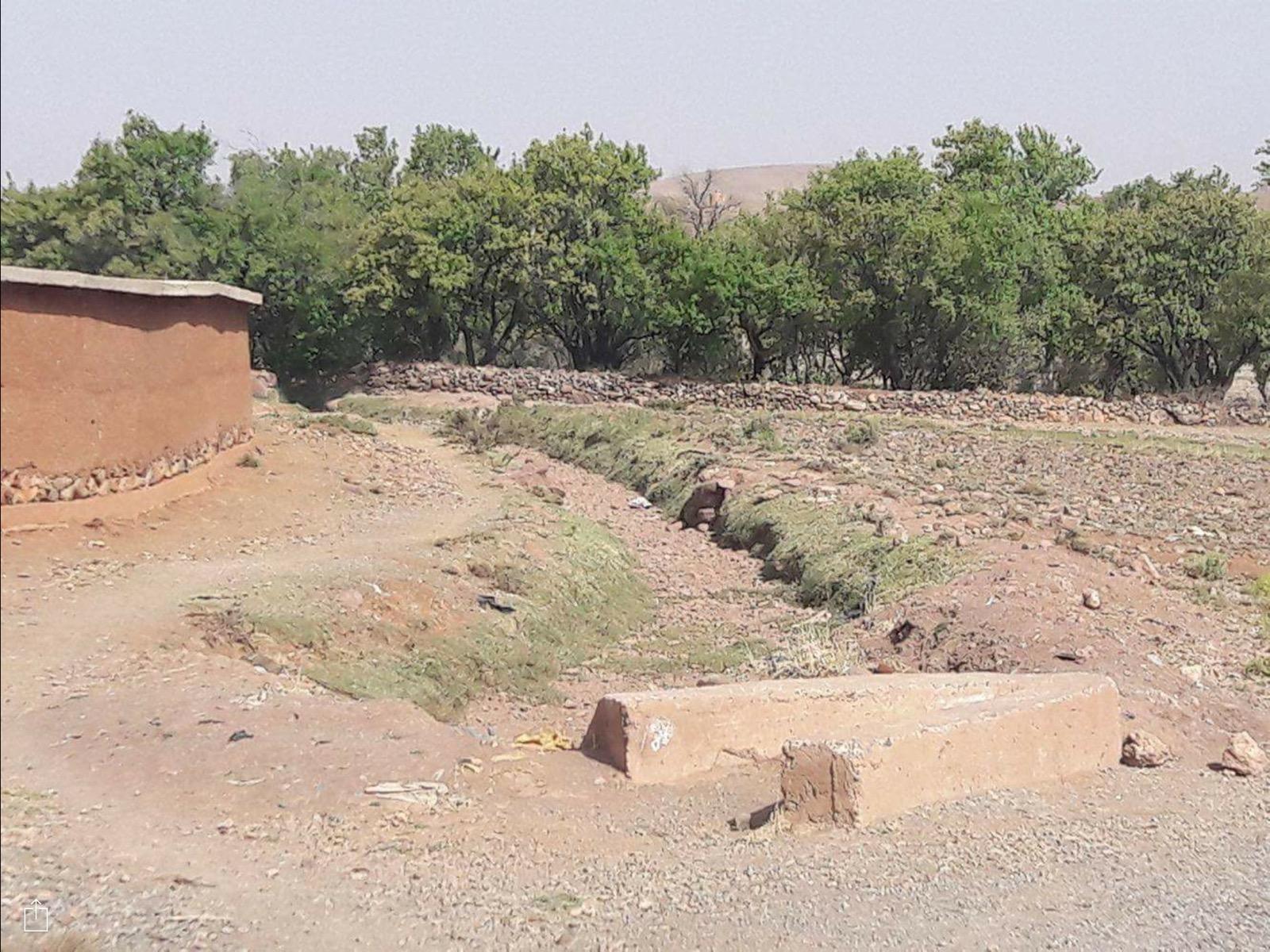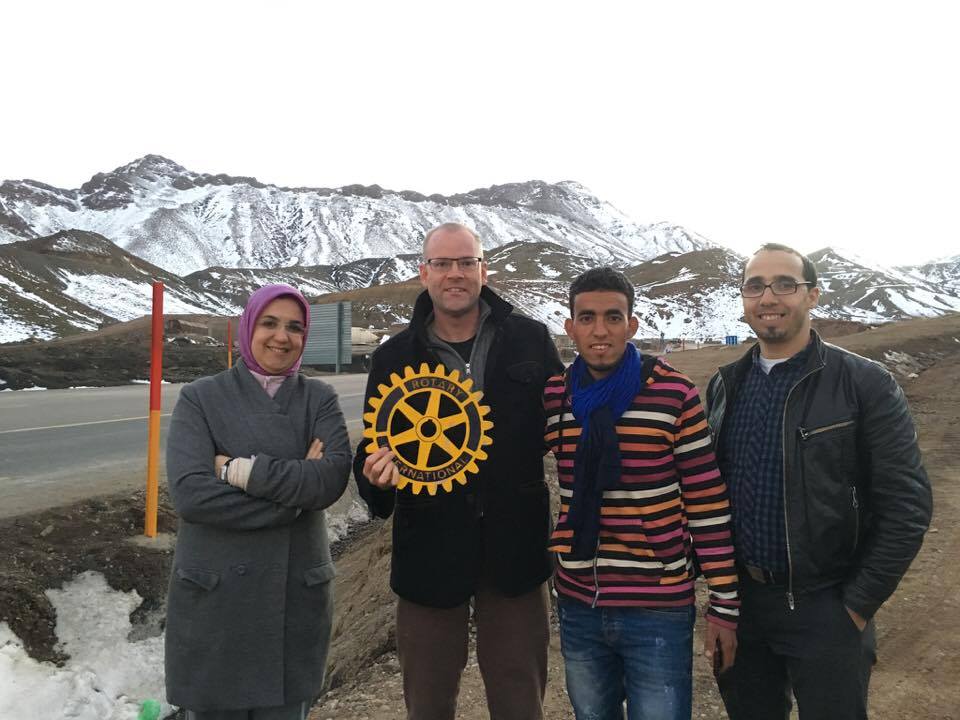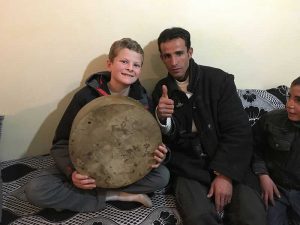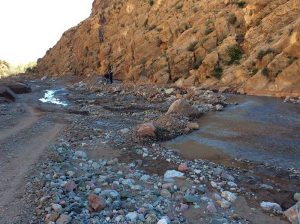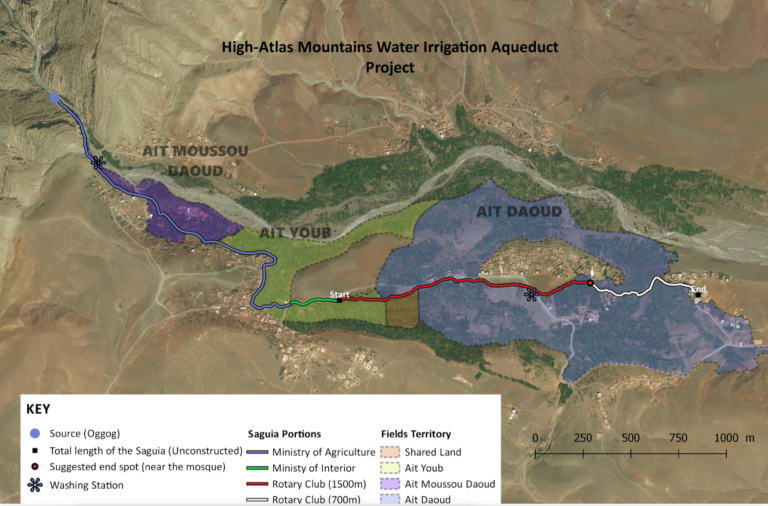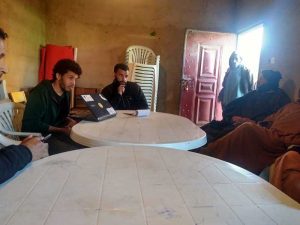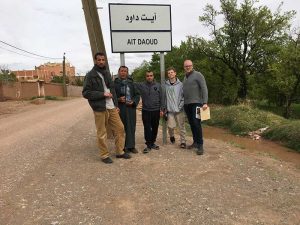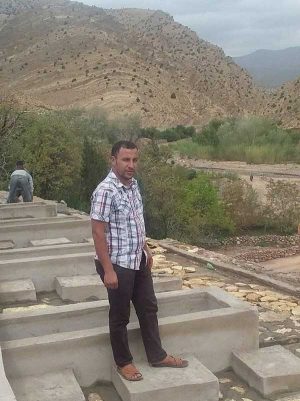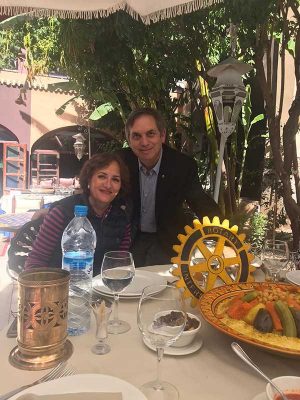The Rotary Club of San Carlos is leading a project to build an aqueduct in Morocco’s High Atlas Mountains. We are building this aqueduct in the Berber villages where San Carlos Rotarian Steve Carlson previously served in the Peace Corps. The project showcases the power of Rotary – hundreds of friends and neighbors and fellow Rotarians have contributed over $250,000 to bring this project to fruition. This project follows five years of planning, and builds on long-standing relationships, cross-cultural communication, and steady perseverance. Construction began in October 2019 and has continued throughout 2020, with Rotary constructing a mile of aqueduct to transport snowmelt from the mountain peaks to the villagers’ fields for irrigation. The project received the honor of being showcased in Rotarian Magazine in February 2020.
Here is a gallery of some of the latest activity from the project.
